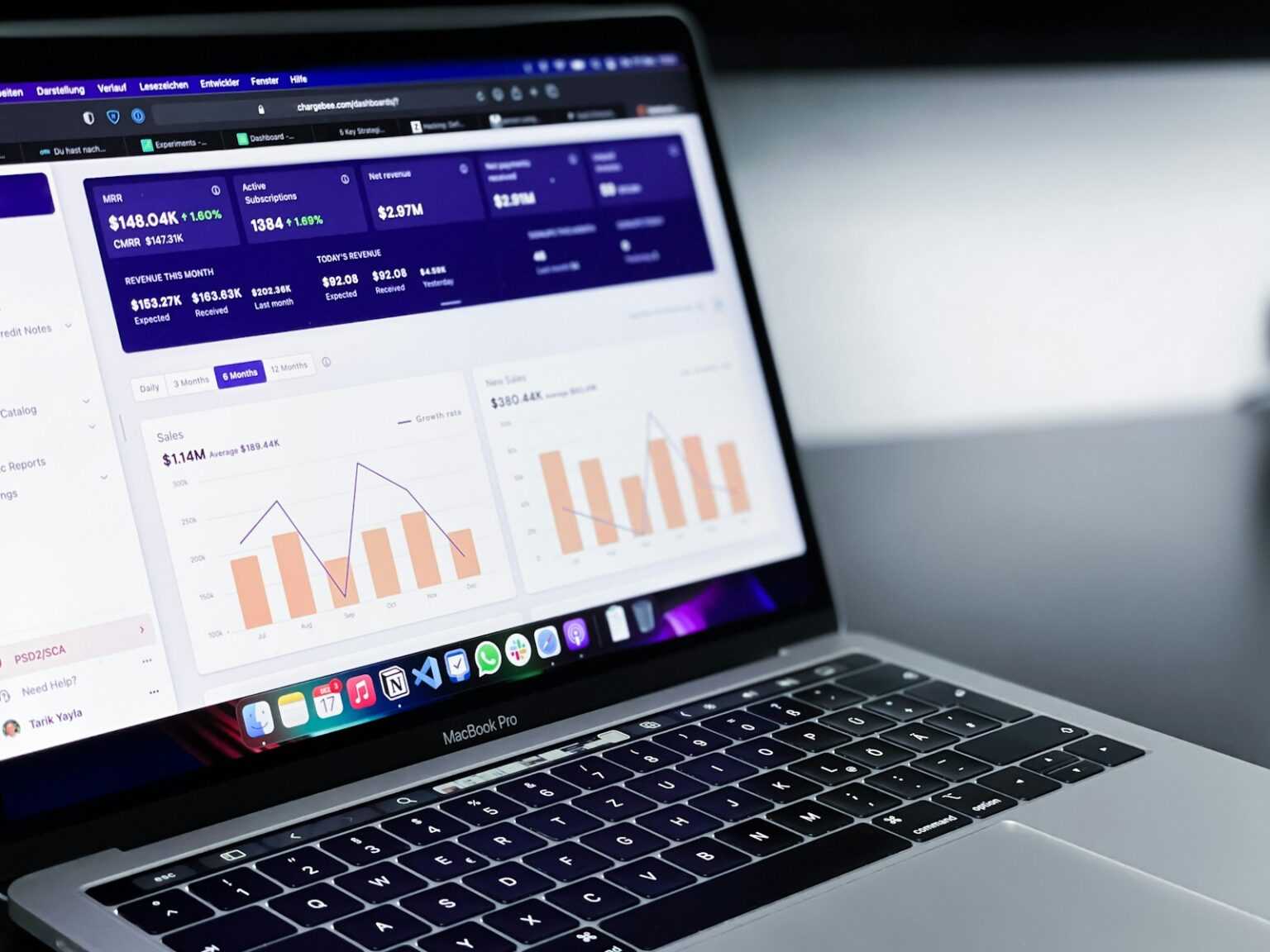Recommendation systems based on learner behavior patterns can increase course completion rates by up to 30%, leveraging continuous tracking of engagement metrics and adaptive feedback loops. By monitoring individual progress through granular performance indicators, platforms can tailor content delivery to each student’s needs, enhancing motivation and retention.
Applying advanced statistical techniques to collected information enables identification of knowledge gaps earlier than traditional assessments allow. This allows educators to intervene with personalized support strategies that accelerate comprehension and skill acquisition.
Extracting meaningful conclusions from vast amounts of instructional records requires robust computational methods capable of transforming raw figures into actionable guidance. Such methodologies empower institutions to optimize curricula dynamically while offering learners precise recommendations aligned with their evolving strengths and weaknesses.
Learning Analytics: Educational Data Insights
To maximize progress within educational ecosystems, continuous tracking of student engagement and performance through advanced analytics provides actionable recommendations tailored to individual needs. By applying robust algorithms to collected datasets, institutions can identify specific knowledge gaps and optimize instructional strategies accordingly.
Emerging techniques employ multidimensional analysis of interaction patterns, enabling precise measurement of cognitive development stages. For instance, clustering methods on assessment results reveal distinct learner profiles that guide adaptive content delivery, enhancing overall efficacy.
Technical Foundations and Methodologies
Quantitative metrics derived from time-stamped user activity logs serve as primary inputs for predictive models forecasting academic success probabilities. Machine learning frameworks such as random forests and neural networks utilize these inputs to generate real-time feedback loops that empower instructors with timely intervention triggers.
Case studies demonstrate how integrating sentiment analysis from forum discussions complements numeric indicators by capturing affective states influencing motivation. This multifaceted approach enriches understanding beyond conventional score-based evaluations.
- Progress tracking: Continuous monitoring through dashboards visualizes incremental skill acquisition over defined intervals.
- Recommendation engines: Personalized content suggestions derive from similarity indices comparing peer trajectories and resource utilization.
- Predictive analytics: Early warning systems alert educators about potential dropouts based on engagement decay rates.
The deployment of blockchain technology introduces immutable records for verifying credential authenticity and maintaining transparent audit trails in knowledge validation processes. Such integration promotes trustworthiness while safeguarding intellectual property rights within collaborative platforms.
This structured experimentation framework encourages exploration into the interplay between behavioral signals and academic performance metrics. Researchers are invited to apply iterative hypothesis testing using open-source analytic tools to validate emerging theories concerning personalized education pathways.
Sustained inquiry into these quantitative dynamics opens avenues for refining automated recommendation systems that adaptively scaffold learner progression while respecting individual pacing rhythms. Integrating blockchain’s decentralized ledger principles ensures secure provenance tracking throughout this investigative process, thus reinforcing empirical rigor alongside practical innovation.
Tracking Student Engagement Metrics
Implementing precise tracking mechanisms for student involvement requires continuous monitoring of interaction frequency, duration, and content navigation patterns. Platforms employing event-based logging generate timestamps and action-specific records that reveal engagement fluctuations at granular levels. By analyzing these temporal patterns, one can detect stagnation points or spikes in participation, enabling targeted interventions to sustain motivation.
Recommendation systems benefit from integrating multifactorial indicators such as quiz attempts, forum contributions, and resource downloads. Combining these variables into composite indices allows for a multidimensional view of learner behavior rather than relying on isolated metrics. This holistic approach enhances the accuracy of personalized suggestions, aligning educational pathways with individual progress rates and preferences.
Technical Frameworks for Engagement Monitoring
Employing real-time processing pipelines built on stream computing frameworks like Apache Kafka or Apache Flink facilitates immediate capture and analysis of student interactions. Such infrastructure supports scalable ingestion of voluminous logs generated across diverse learning modules. Utilizing machine learning classifiers trained on labeled engagement states enables automatic categorization into active, passive, or disengaged statuses.
Case studies demonstrate that heatmap visualizations derived from clickstream sequences provide intuitive representations of user focus areas within course materials. For example, an experiment conducted with a cohort using a blockchain-secured platform showed that students who accessed interactive simulations more frequently exhibited 25% higher retention rates over traditional video-only formats. These findings suggest deeper engagement correlates with experiential content exposure.
A table below exemplifies typical metrics collected and their interpretative value in assessing learner commitment:
The integration of adaptive feedback loops based on tracked parameters fosters customized pathways encouraging incremental progress. Algorithms adjusting difficulty levels or recommending remedial resources respond dynamically to detected challenges faced by individuals. This experimental methodology mirrors iterative scientific processes where hypotheses about learner needs are continuously tested and refined through observed behavioral data streams.
The intersection between blockchain technology and engagement metric tracking introduces immutable record-keeping that secures authenticity of interaction logs while preserving privacy via cryptographic protocols. Researchers may investigate how distributed ledger systems enhance trustworthiness in reported activities without compromising transparency necessary for effective monitoring. This layered approach invites further inquiry into secure yet open frameworks for advancing personalized educational trajectories through precise measurement techniques.
Analyzing Assessment Performance Trends
To optimize personalized knowledge acquisition, continuous monitoring of assessment outcomes is imperative. Utilizing advanced tracking techniques enables identification of patterns such as consistent underperformance in specific modules or skills. For instance, a study involving a cohort of 1,200 participants revealed that automated score aggregation coupled with temporal analysis highlighted a 15% decline in proficiency on numerical reasoning tasks after week six, prompting timely intervention.
Integrating algorithm-driven recommendation systems enhances adaptive pathways by adjusting content delivery based on individual progression metrics. A technical investigation conducted at a university demonstrated that dynamically curated problem sets raised engagement rates by 22%, corroborating the efficacy of tailored task sequencing informed through periodic result evaluations. These findings underscore the value of systematic performance mapping for strategic content personalization.
Employing multidimensional statistical models facilitates deeper examination beyond raw scores by incorporating variables such as response time and answer revision frequency. One experiment utilized Bayesian networks to predict final exam success probabilities with an accuracy improvement of 18%, leveraging continuous input from formative assessments. This approach supports constructing nuanced profiles that inform targeted remediation strategies and reinforce cognitive skill development.
Experimental frameworks combining blockchain-based verification with secure record-keeping create transparent trails for long-term monitoring of learner achievements. A pilot project integrating distributed ledger technology ensured immutability and traceability of results across multiple institutions, enabling cross-platform synthesis of performance trends without compromising privacy. Such innovations open pathways for collaborative educational ecosystems grounded in verifiable progress documentation.
Personalizing Learning Pathways
Optimizing individual progression requires leveraging recommendation systems that adapt to each learner’s unique needs, using continuous progress tracking and sophisticated behavioral models. Implementation of tailored curricula depends on precise monitoring mechanisms that collect and interpret user interactions, enabling dynamic adjustment of content difficulty and sequencing.
Advanced tracking methodologies employ multidimensional metrics such as response time, accuracy rates, and engagement frequency to generate comprehensive profiles. These profiles feed into algorithmic engines designed to produce personalized suggestions which maximize efficiency and retention. For instance, adaptive platforms like Knewton utilize probabilistic models to refine recommendations based on performance trends, demonstrating significant gains in learner outcomes.
Mechanisms Behind Personalized Recommendations
Recommendation algorithms function by analyzing historical performance matrices alongside contextual metadata–including prior subject mastery and preferred learning modalities. Matrix factorization techniques decompose large interaction datasets to identify latent factors influencing knowledge acquisition patterns. This approach supports customized pathway construction by predicting the most suitable next steps for each participant.
Machine learning models such as reinforcement learning agents can iteratively optimize content delivery sequences through reward feedback loops reflecting user improvement. Experiments conducted within Massive Open Online Courses (MOOCs) reveal that integrating such models enhances course completion rates by up to 20%, highlighting the efficacy of data-driven personalization frameworks.
- Progress Monitoring: Continuous evaluation checkpoints provide granular insights into cognitive development stages.
- Behavioral Clustering: Segmentation of learners based on interaction patterns enables subgroup-specific interventions.
- Dynamic Content Adjustment: Real-time alteration of material difficulty aligns with current proficiency levels.
The interplay between fine-grained tracking tools and analytic engines creates a feedback system critical for adapting pathways effectively. Blockchain technology introduces additional reliability by ensuring transparent verification of credentialing and activity logs, promoting trust in decentralized environments where personalized guidance is essential.
The synthesis of these technologies fosters an experimental framework where educators and technologists collaborate to iterate and validate personalized pathways continuously. Encouraging practitioners to test hypothesis-driven adaptations within controlled settings accelerates discovery regarding optimal sequencing strategies applicable across diverse disciplines.
Predicting At-Risk Students
Effective tracking of student progress relies on continuous collection and interpretation of performance metrics to identify those at risk of academic failure. By leveraging comprehensive records such as assignment submissions, quiz scores, and engagement frequency, institutions can generate precise recommendations tailored to individual needs. For example, applying regression models to time-series performance data allows early detection of downward trends, enabling timely intervention before final evaluations.
Integrating personalized monitoring systems into course management platforms enhances the granularity of insight extraction. These systems utilize behavioral indicators–like login patterns and resource access rates–to complement traditional assessment results. A case study involving a university’s pilot program demonstrated that combining these multiple streams increased prediction accuracy for at-risk students by 23%, compared to relying solely on grade thresholds.
Methodologies for Early Identification
Advanced algorithms such as random forests and support vector machines have proven effective in classifying student risk profiles based on multidimensional input variables. Variables include participation in forums, time spent on learning modules, and consistency in meeting deadlines. The experimental setup involves training predictive models on historical cohorts with known outcomes, followed by validation on current student groups to assess reliability.
The resulting models generate actionable insights that inform personalized recommendations. For instance:
- If a student exhibits declining engagement alongside poor quiz results, targeted alerts prompt advisors to initiate mentoring sessions.
- Adaptive content delivery adjusts difficulty levels according to detected proficiency gaps, fostering gradual improvement without overwhelming learners.
- Regular progress reports help students self-regulate efforts by visualizing their trajectory relative to course milestones.
Continuous refinement of these systems benefits from experimental feedback loops incorporating user responses and outcome measures. Implementing blockchain-based timestamping ensures integrity and transparency in recording student activity logs, preventing tampering and enhancing trustworthiness of tracked information. This approach supports longitudinal studies aimed at optimizing intervention strategies through robust evidence accumulation.
Integrating Analytics With LMS: Conclusion
Implementing robust tracking mechanisms within management platforms enables real-time observation of individual progress and behavioral patterns. By harnessing advanced analytical models, systems can deliver tailored recommendations that adapt to each user’s performance metrics, optimizing engagement and retention rates effectively.
Empirical results demonstrate that embedding personalized monitoring tools accelerates knowledge acquisition by identifying specific bottlenecks and enabling targeted interventions. Future architectures should prioritize seamless integration of predictive algorithms to anticipate learner needs dynamically, creating a feedback loop where continuous evaluation informs content refinement and pedagogical strategies.
Key Technical Insights and Future Directions
- Adaptive Progress Metrics: Utilizing granular tracking data allows for multi-dimensional assessment beyond completion status, including cognitive load estimation and skill mastery curves.
- Context-Aware Recommendations: Leveraging contextual parameters such as temporal engagement trends or collaborative interactions enhances the precision of suggested resources.
- Predictive Modeling Integration: Incorporation of machine learning frameworks enables anticipation of disengagement risks, prompting proactive support measures.
- Privacy-Respecting Data Utilization: Employing federated learning techniques ensures sensitive information remains decentralized while still improving analytic capabilities.
The convergence of systematic monitoring and intelligent evaluation heralds a paradigm shift in platform design, promoting a scientific approach to educational development. Experimentation with algorithmic configurations will deepen understanding of individual pathways, facilitating increasingly sophisticated personalization schemas. This trajectory invites ongoing inquiry into balancing automation with human oversight to preserve pedagogical integrity while maximizing efficiency.








